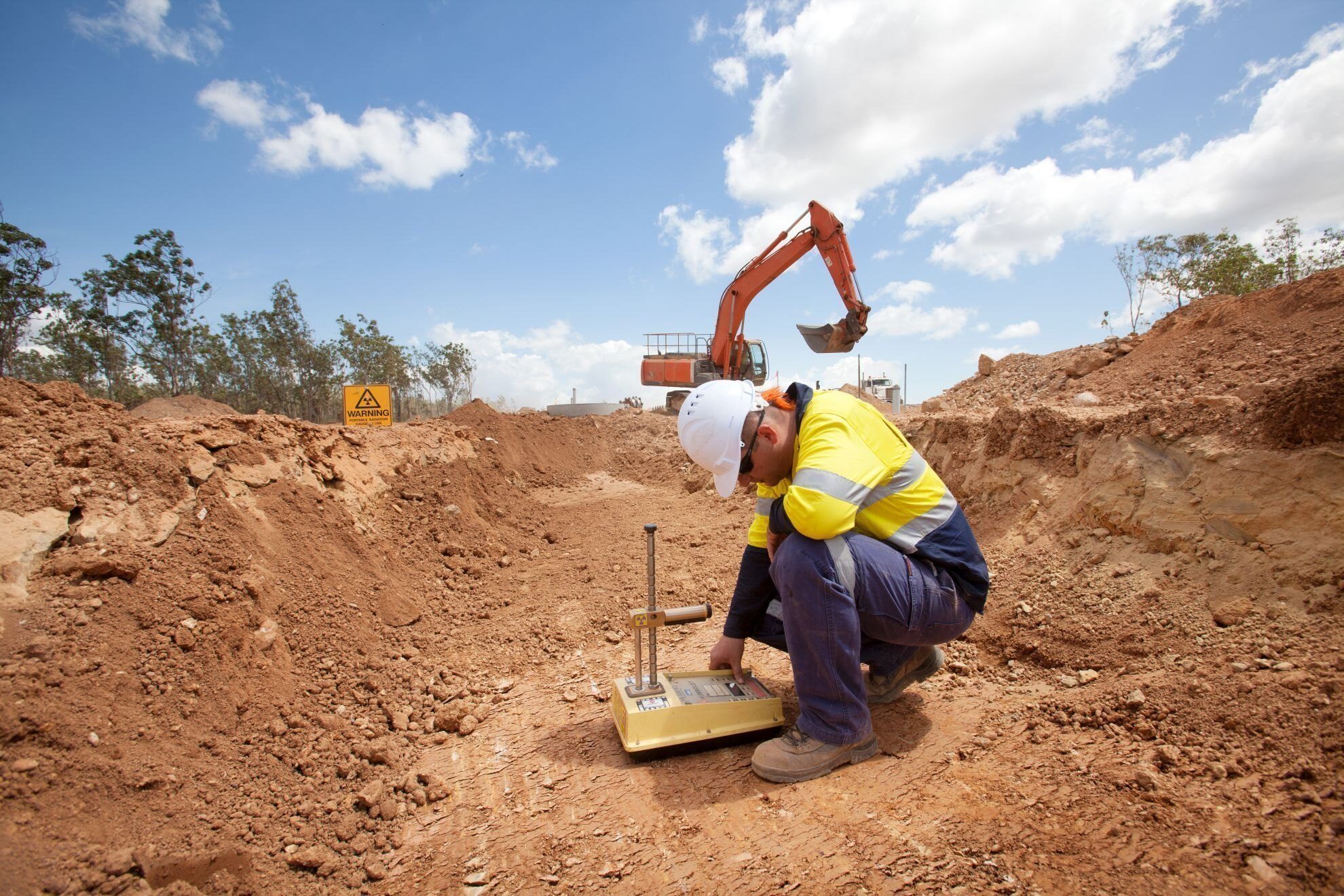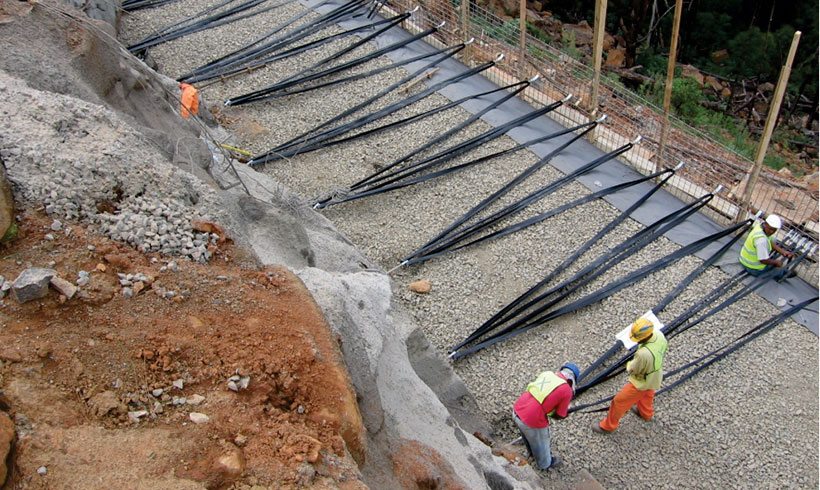Specialized Geotechnical Engineering Solutions Fundamentals Explained
Specialized Geotechnical Engineering Solutions Fundamentals Explained
Blog Article
8 Simple Techniques For Specialized Geotechnical Engineering Solutions
Table of ContentsAn Unbiased View of Specialized Geotechnical Engineering SolutionsSpecialized Geotechnical Engineering Solutions for DummiesThe 20-Second Trick For Specialized Geotechnical Engineering SolutionsLittle Known Facts About Specialized Geotechnical Engineering Solutions.Our Specialized Geotechnical Engineering Solutions IdeasHow Specialized Geotechnical Engineering Solutions can Save You Time, Stress, and Money.
William Rankine, a designer and physicist, created an alternative to Coulomb's earth stress concept. Albert Atterberg established the clay uniformity indices that are still utilized today for dirt category. In 1885, Osborne Reynolds recognized that shearing reasons volumetric dilation of dense materials and tightening of loose granular materials. Modern geotechnical engineering is claimed to have started in 1925 with the publication of Erdbaumechanik by Karl von Terzaghi, a mechanical designer and rock hound. Terzaghi additionally established the framework for concepts of bearing ability of foundations, and the theory for prediction of the price of negotiation of clay layers because of combination. Afterwards, Maurice Biot fully created the three-dimensional dirt loan consolidation concept, prolonging the one-dimensional version previously established by Terzaghi to much more general theories and presenting the set of fundamental formulas of Poroelasticity.
Geotechnical engineers explore and identify the residential properties of subsurface problems and products. They likewise design matching earthworks and retaining frameworks, passages, and structure structures, and may oversee and examine sites, which may better involve site monitoring along with the risk analysis and mitigation of all-natural hazards. Geotechnical designers and design geologists execute geotechnical investigations to acquire details on the physical homes of dirt and rock hidden and adjacent to a site to design earthworks and structures for recommended structures and for the repair work of distress to earthworks and structures triggered by subsurface problems.
6 Simple Techniques For Specialized Geotechnical Engineering Solutions
Still, they are occasionally used to permit a rock hound or engineer to be lowered right into the borehole for straight visual and hand-operated assessment of the dirt and rock stratigraphy. Numerous dirt samplers exist to satisfy the demands of various engineering tasks. The typical infiltration test, which uses a thick-walled split spoon sampler, is the most typical method to collect disrupted samples.

If the user interface between the mass and the base of an incline has a complex geometry, slope security analysis is hard and numerical remedy methods are required. Commonly, the user interface's precise geometry is unknown, and a simplified interface geometry is thought. Limited slopes call for three-dimensional designs to be evaluated, so most inclines are examined presuming that they are definitely vast and can be stood for by two-dimensional designs.
Get This Report about Specialized Geotechnical Engineering Solutions

Dimension of quantities and evaluation of actual conditions. It is unsuitable for tasks whose layout can not be changed throughout building and construction.
Concepts of Geotechnical Design. Thomson Discovering. Budhu, Muni (2007 ). Dirt Auto Mechanics and Structures. John Wiley & Sons, Inc. . ISBN 978-0-471-43117-6. Disrupted soil homes and geotechnical style, Schofield, Andrew N., Thomas Telford, 2006. Guerriero V., Mazzoli S. (2021 ). "Theory of Effective Tension in Dirt and Rock and Implications for Fracturing Processes: An Evaluation".
The Greatest Guide To Specialized Geotechnical Engineering Solutions
Concepts and Technique of Ground Enhancement. Ground Improvement Concepts And Applications In Asia. Style analysis in rock mechanics.
Cengage Understanding, Stamford, 666 p. Atkinson, J., 2007. The auto mechanics of dirts and foundations. Taylor & Francis, N.Y., 442 p. Drifting Offshore Wind Wind Turbines: Feedbacks in a Sea state Pareto Ideal Designs and Economic Analysis, P. Sclavounos et al., October 2007. Nicholson, D, Tse, C and Penny, C. (1999 ). The Observational Technique in ground design principles and applications.
Not known Factual Statements About Specialized Geotechnical Engineering Solutions
These records are tailored to meet the certain needs of a project and include layout specifications and suggestions for the building of a variety of manufactured frameworks. As offering consultancy services covering areas such as incline stability and load-bearing capacities for various products, these engineers carry out research study and development tasks to improve methods, devices, materials expertise and evaluation covering entire lifecycles.
Engineering the residential properties and mechanics of rocks consisting of the application of dynamics, fluid mechanics, kinematics and product technicians. This combines geology, dirt and rock mechanics, and structural design for the design and construction of foundations for a variety of civil engineering projects. This field includes predicting the efficiency of structure dirt and rock to a load imposed by a framework, while taking into consideration performance, economic climate and security.
Prices of pay typically raise as your expertise and skills expand, with guidelines pointing to a graduate beginning salary of in between 18,000 and 28,000 per year in the UK. This climbs to 26,000 to 36,000 with a couple of years of experience and afterwards reaching 40,000 to 60,000+ for senior, chartered or master engineers.
The Single Strategy To Use For Specialized Geotechnical Engineering Solutions
However, with the ideal application it is possible to understand the occupation and gain entrance Going Here to a challenging yet rewarding and crucial occupation. A rock hound would require to retrain to end up being a geotechnical designer, although there is lots of cross-over between both professions, which could make this much easier. Geologists need to have an understanding of dirts, rocks and various other materials from a scientific viewpoint, while geotechnical engineers story their knowledge of matters such as soil and rock mechanic, geophysics and hydrology and use them to engineering and ecological projects.
When beginning, these engineers will tend to work with much additional hints less intricate tasks, developing understanding and experience prepared for more difficult job later. Geotechnical designers have a tendency to specialise in certain areas as they grow in experience, concentrating on particular facilities such as trains, roadways or water. These engineers also collaborate with renewable resource, offshore and onshore oil and gas, nuclear power, and more.
Report this page